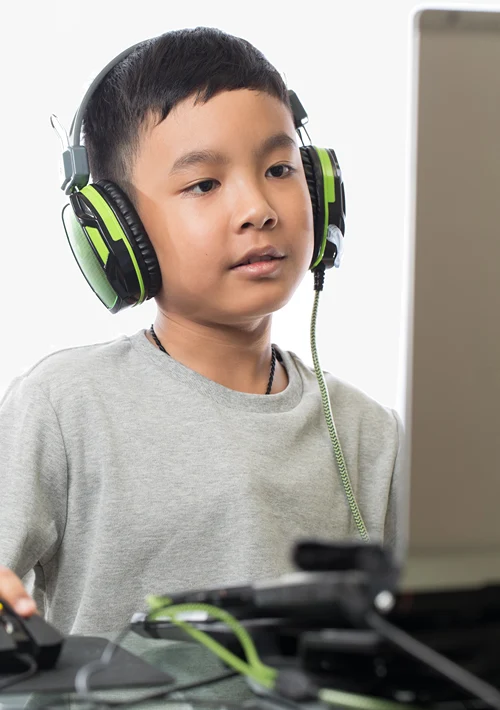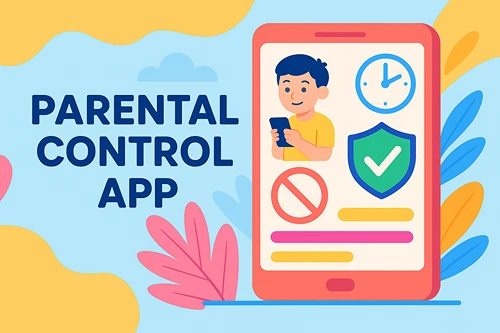Is Your Child Really Safe Online at School and Home?
The internet is part of most children’s daily lives. They use it for school, entertainment, and communicating with friends. However, many do not realise that some of the greatest dangers are only a click away.
It is easy to think that school and home are safe places, but online threats do not stop at the door. Classrooms have screens, and bedrooms often contain unsupervised devices. This leaves children open to risks when no one is watching.
Staying informed about what really happens online helps adults take better action. Children need guidance and strong habits as they grow up with technology. With the proper support, they can use the internet safely and responsibly.
Online Threats Children Face Daily
Today’s children are online more than ever. They play games, join group chats, and use learning apps long before they reach their teenage years. What seems harmless on the surface can lead to real danger.
Cyberbullying has become common, primarily through messaging features on games and social platforms. Some children face teasing, threats, or exclusion from their peer groups, which affects their mood, focus, and confidence.
Inappropriate content is also easy to stumble upon. A misspelt word or a single wrong click can open harmful videos or websites. Such experiences can leave a lasting impression, especially on young minds.
Many schools and early learning centres are working hard to reduce these risks. For example, St Nicholas early education has clear image policies that protect children’s privacy. Parents must provide written permission before any child’s photo is used, helping prevent public sharing of images that include uniforms or school branding. This is a smart step that all schools and families should consider.
Many children also talk to strangers online. It often starts with casual in-game chats and grows into longer conversations. The issue is that not every “friend” online is who they claim to be.
Children may not realise they are being targeted until it is too late. Constant reminders about safe behaviour are essential. They need clear rules about whom they can talk to and what to do if something feels wrong.
What’s Really Happening at School with Internet Use
In most schools, the internet is a regular part of learning. Children research topics, submit homework, and chat with classmates through school devices. On the surface, this seems helpful and controlled.
However, there are gaps. Some schools lack strong content filters. Others do not provide enough staff training to identify online risks, leaving teachers unsure of how to respond when something serious happens.
Even when schools have technological tools in place, students may still find ways around them. They can switch browsers, use hidden apps, or connect to mobile data if Wi-Fi blocks are set up. These shortcuts often go unnoticed during a busy school day.
Open conversations about internet use can help fill those gaps. Teachers need to set clear rules for what is allowed while giving students the opportunity to ask questions and report anything that makes them uncomfortable.
Why Home Isn’t Always Safer
Home feels comfortable, which makes it easy to assume children are safe online. Yet comfort can lead to less attention.
Many parents allow their children to use phones, tablets, or gaming consoles alone. These devices may seem harmless, but apps can change quickly, and not all include user-friendly safety settings. Some platforms offer private chats, video-sharing, or temporary messages that disappear before adults can review them.
Not knowing what children are doing online does not mean they are not at risk. Even smart and cautious kids can make poor choices or fall for something that appears harmless. They might click links without reading, join chats under peer pressure, or hide their activity if they feel unsure.
Setting clear screen-time rules, checking in often, and using parental control tools can all help. However, nothing replaces open communication. Ask your child what they are doing, who they are talking to, and what they have seen.
How Adults Can Lead the Way
Children follow the examples set by adults. When teachers and parents work together, online safety becomes part of daily life rather than a single conversation.
One of the best things adults can do is make online safety a regular topic. This means asking questions, showing interest in the apps children use, and creating space for open dialogue. Children are more likely to share problems if they do not fear punishment.
Simple habits such as keeping devices out of bedrooms at night or watching online videos together can also help. These steps build trust and reduce the likelihood that children will hide risky behaviour.
At school, educators can lead by updating their safety policies and checking in regularly with students about their digital habits. When children see that adults care, they take these rules more seriously.
Why Tech Tools Aren’t Enough on Their Own
There are many apps and systems designed to make the internet safer for children. Parents can set screen-time limits, block specific websites, and monitor usage from their phones. Schools often use similar tools on shared devices.
However, these tools are not perfect. Children often learn how to bypass filters or use alternate accounts to avoid restrictions. No app can replace the value of human guidance.
Tech tools should support, not replace, adult involvement. They help flag concerns, but adults must take action. This is why consistent supervision, regular conversations, and updated settings matter so much.
Think of these tools as backup, not a complete solution. They work best when paired with real-life rules and engagement from both home and school.
Wrap Up
Online safety is not automatic. It takes real action from parents, teachers, and students to build trust every day. When adults stay involved, children learn how to make better choices online. Staying safe starts with staying connected and staying curious.





